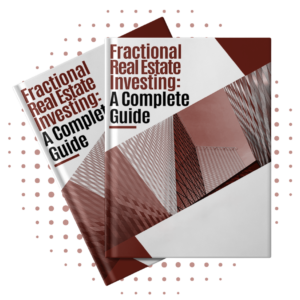
According to commentator and entrepreneur Armstrong Williams, "real estate provides the highest returns, the greatest values, and the least risk.” Therefore, he says it's important to learn as much about real estate as you can.
One way to do this is by understanding capitalization rates (cap rates) and how they affect your return on investment (ROI). If you get this right, you'll be well on your way to success in the real estate market. In this brief guide, you'll learn what cap rates are, how to calculate them, and how to use that knowledge to make your next real estate purchase a good one.
Jump to a Section:
Capitalization Rate (Cap Rate) Defined
Capitalization rates, often shortened to simply cap rates, are solely measures used to estimate and compare the rates of return on commercial real estate properties. Cap rates are important in commercial real estate as they provide investors valuable insight into a property by helping to determine the property’s overall risk.
Cap rates are calculated by dividing the property’s net operating income or NOI from its property asset value. The cap rate formula can be found below.
Calculating a Cap Rate
Capitalization Rate = Net Operating Income / Property Asset Value
To calculate a cap rate, take the following steps:
Calculate the property’s net operating income or NOI
Divide the NOI of the property by the current market value
Convert the product of your division into a percentage
Cap Rate Example
The following is a simple example of a cap rate:
A commercial office building has a net operating income or NOI of $100,000.
The building recently sold for $1,000,000.
Therefore, the cap rate would be 10%.
What Do Cap Rates Indicate?
Overall, cap rates indicate the rate of return that is expected to be generated on a given real estate investment property.
Cap Rate represents the percentage return an investor would receive on an all-cash purchase.
Another way to think about the cap rate is that it’s just the inverse of the price/earnings multiple. Consider the following chart:
When to Use a Cap Rate
A cap rate is best used when an investor or landlord is comparing two properties that are similar and want to evaluate which property has the best cap rate or higher return on their investment. Since a cap rate relies on knowing the annual net operating income, cap rates are most useful when used for evaluating multifamily rental properties, single-family rental homes, apartment buildings, rentable townhouses or commercial real estate.
Understanding the cap rate can help you see the potential profitability of a property and understand how long it will take to pay off your investment based on the estimated net operating income from the property. A cap rate is one tool that an investor should use in evaluating investment property, but it should not be used by itself. Instead, it should be used with other financial analyses to accurately measure the risks and investment potential. A cap rate is an easy, predictable way for an investor to figure out an estimate of the potential profit on a specific property.
What Is a Good Cap Rate?
A good cap rate is generally between 4 and 10%. A lower cap rate implies a lower risk on your investment, while a high cap rate implies a higher risk on your investment. Investors looking for a lower purchase price or who want to pay for the cost of purchase quickly may look to purchase an investment with a higher cap rate to meet their goals.
Components of a Cap Rate
The following elements are all components that make up a cap rate:
The status, location and age of a property
The property type such as industrial, retail, multifamily, office, etc.
A record of tenants’ solvency and regular receipts of rentals
A detailed document of the term and structure of the tenant lease(s)
An in-depth overview of the market rate of the property
A list of any factors affecting the valuation of the property
The macroeconomic fundamentals of the region as well as factors impacting tenants’ businesses
The Gordon Growth Model (aka Dividend Discount Model DDM)
Another form of cap rate you should be familiar with for the real estate industry is known as the Gordon Growth Model or the dividend discount model. Essentially, the Gordon Growth Model is used to calculate the inherent value of a company’s stock price.
The formula used in the Gordon Growth Model looks like this:
Stock Value = Expected Annual Dividend Cash Flow / (Investor's Required Rate of Return - Expected Dividend Growth Rate)
or
(Required Rate of Return - Expected Growth Rate) = Expected Cash Flow / Asset Value
In the Gordon Growth Model formula, the cap rate is simply the difference between the rate of return and the expected growth rate. This means that the expected cash flow equates to the NOI and that the asset value represents the property’s market price.
The Gordon Growth Model formula in action would look like this:
The net income of a building is $100,000. The cap rate is 8.0 percent and the growth rate is 2.0 percent. The growth value of the property would be $1666,667
Conclusion
We hope this overview has helped you better understand the meaning of cap rate and its purpose in the real estate industry. Overall, we have outlined that a cap rate or capitalization rate is simply a measure used to estimate and compare the rate of return on commercial real estate properties.
Through this review, we also came to understand that cap rates play an important role in the commercial real estate market as they provide investors valuable insights into a property's overall risk and potential.
EquityBrix can help you grow your wealth through our fractional real estate investment platform. Our team marries the needs of investors and real estate developers by providing opportunities for above-market returns. EquityBrix is committed to creating high-yield investment offerings, and we can help guide you through the new era of real estate investing.
If you want more information about tokenized real estate investing go to EquityBrix or EquityBrix.com/Learn.
If you are looking to grow your wealth and diversify your investment portfolio by learning about innovative ways of investing in real estate go to EquityBrix, or contact us for more information, or sign-up for the EquityBrix Newsletter.
*Disclaimer: EquityBrix is not an investment adviser. This information is for educational purposes only and does not constitute investment or tax advice. It’s important to be informed and to make your own investment decisions or do so in consultation with a professional financial advisor. Under no circumstances should this material be used or considered as an offer to sell or a solicitation of any offer to buy an interest in any investment. Any such offer or solicitation will be made only by means of a written online prospectus relating to the particular investment.
FAQs
What does a 7.5% cap rate mean?
An example of a 7.5% cap rate on a property would be if the NOI of the property was $75,000 and the property or market value was $1,000,000.
Cap Rate = NOI / Property Asset Value or 7.5% Cap Rate = $75,000 / $1,000,000
What is a good cap rate to buy?
While there is some variability, most investors agree that a good cap rate hovers around 4%. However, any rate between 5% and 10% can also be considered a good cap rate.
Is a high cap rate good or bad?
A high cap rate is neither good nor bad. Rather than thinking of cap rates as good or bad, it’s best to think of them in terms of risk. Essentially, a low cap rate indicates a safer investment and a high cap rate indicates a riskier investment.
What does an eight percent cap rate mean?
An example of an 8% cap rate on a property would be if the NOI of the property was $80,000 and the property or market value was $1,000,000.
Cap Rate = NOI / Property Asset Value or 8% Cap Rate = $80,000 / $1,000,000

